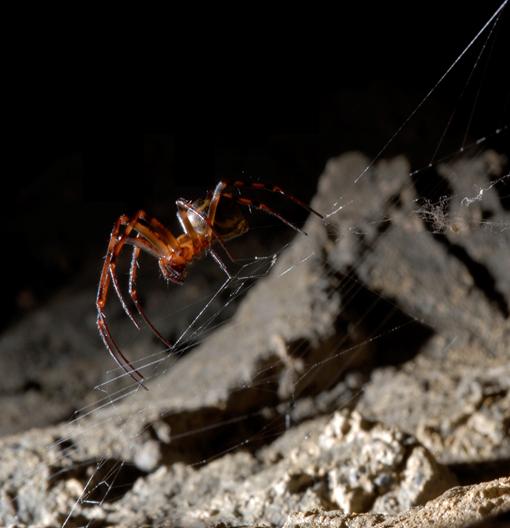
Spider silk is one of the toughest polymer fibres known. But according to researchers from the University of Cambridge Graphene Centre and the University of Trento, Italy, its properties are enhanced even further if the spiders are allowed to ingest graphene and carbon nanotubes (CNTs).
In a bizarre-sounding experiment at Cambridge as part of the EU Graphene Flagship’s Composites Work Package, the researchers sprayed solutions containing graphene and CNTs into a tank containing spiders. Afterwards, they collected silk the spiders had produced, compared it with silk from before they had their carboniferous lunch, and obtained surprising results.
The post-ingestion silks had a fracture strength up to 5.4GPa, three times higher than the control samples, while their toughness modulus increased up to tenfold, reaching 2.1GPa in the best samples. The results are discussed in a paper in the journal 2D Materials.
It was already clear that spiders could use materials from their environment to enhance the strength of their tissues, explained Nicola Pugno of the University of Trento. "We already know that there are biominerals present in the protein matrices and hard tissues of insects, which gives them high strength and hardness in their jaws, mandibles and teeth, for example. So our study looked at whether spider silk's properties could be 'enhanced' by artificially incorporating various different nanomaterials into the silk's biological protein structures.”
The results exceeded expectations, however. "This is the highest fibre toughness reported to date, and a strength comparable to that of the strongest carbon fibres or limpet teeth," said Pugno. "These are still early days, but our results are a proof of concept that paves the way to exploiting the naturally efficient spider spinning process to produce reinforced bionic silk fibres, thus further improving one of the most promising strong materials."
The enhanced fibres could find uses in speciality high-performance fabrics, such as parachutes, or in biodegradable applications such as in sutures or medical dressings. Spider silk is stronger than conventional silkworm silk, Pugno said, and therefore has received much research attention in recent years. “It is among the best spun polymer fibres in terms of tensile strength, ultimate strain, and especially toughness, even when compared to synthetic fibres such as Kevlar," he said.




Red Bull makes hydrogen fuel cell play with AVL
Formula 1 is an anachronistic anomaly where its only cutting edge is in engine development. The rules prohibit any real innovation and there would be...